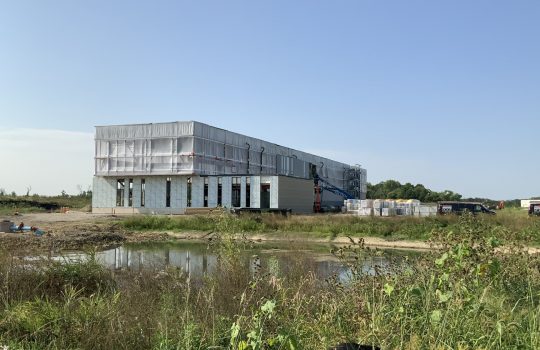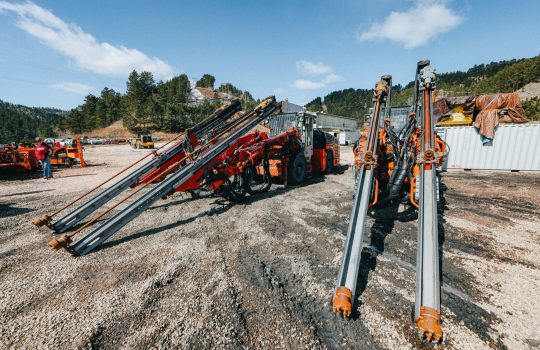Batavia, Ill., Neutrinos can easily make their way through the earth and rock between Batavia and a half-mile-deep mineshaft in Soudan, Minnesota, but physicists in the NuMI (Neutrinos at the Main Injector) experiment need the help of a $30.5-million, 20-month excavation effort to create some 4,000 feet of tunnels and other underground experimental areas at the U.S. Department of Energy’s Fermi National Accelerator Laboratory.
To inaugurate the civil construction project,one of the largest in Fermilab’s history, and the largest single construction contract ever for the lab, in monetary terms. A groundbreaking ceremony will be held on Wednesday, May 31, 2000, at 3 p.m., complete with shovel-wielding officials of the laboratory, the experiment and the Department of Energy, government representatives, and representatives of S.A. Healy Company of Lombard, Illinois.
Healy has the task of creating a tunnel approximately 25 feet in diameter, which, along with access shafts, two large caverns and a connection to the new Main Injector accelerator, will require excavating some 109,000 cubic yards of earth from the limestone and shale beneath the laboratory. The project will employ excavating techniques ranging from conventional blasting to a state-of-the-art tunnel-boring machine.
The experiment will attempt to determine whether neutrinos have mass, by sending a beam of the elusive subatomic particles through the earth from Fermilab to a detector in northern Minnesota, a distance of 735 kilometers or about 450 miles. If the composition of the beam alters between its origin and destination, scientists will then conclude that neutrinos have mass–a conclusion with profound implications for our understanding of the fundamental nature of matter and the makeup of the universe. The Department of Energy is providing $136 million for the experiment, with additional funding from the State of Minnesota and the United Kingdom.
Fermilab is operated by Universities Research Association, Inc., for the U.S. Department of Energy.



